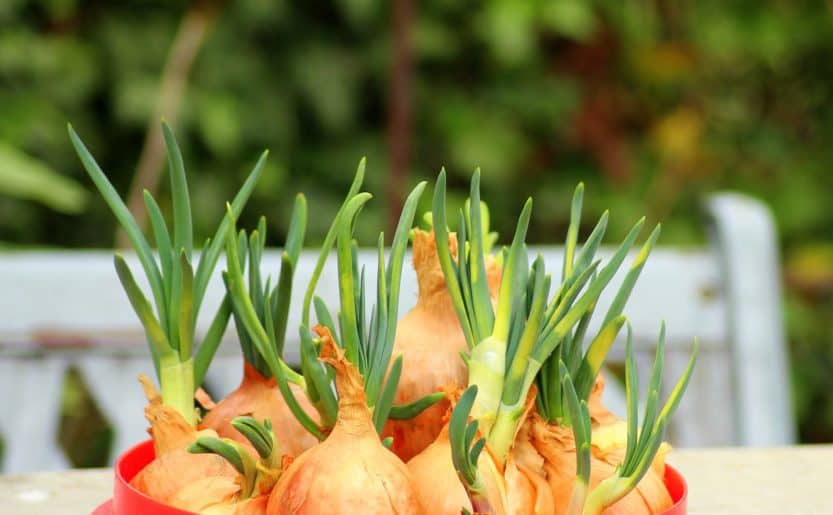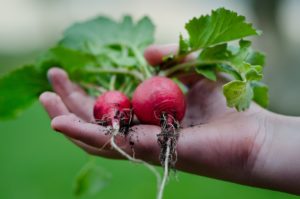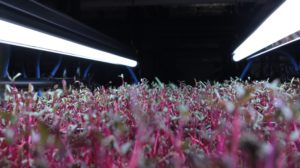Onions fit into almost any garden with their myriad of uses and minimal space requirements. Onions are an excellent source of fiber and vitamin B-6 while also being a good source of calcium and other trace minerals.
Buy Onion Sets Online
| Image | Name | Rating | Shop |
|---|---|---|---|
 | Mixed Red, White and Yellow Onion Sets 8 oz | Organic Non-GMO Bulbs | ||
 | Yellow Ebenezer Onion Sets | ||
 | Onion Sets ,MIX, Red,Yellow,White (50-70 bulbs) |
What is the Difference Between Red and White Onion?
Onions come in a range of colors and flavors. With colors ranging from white to yellow and then to red. The most common onion, the white onion, has a strong, sharp and tangy taste, while the yellow onion has a more mild, sweet flavor. The red onions are generally eaten fresh and are usually used as a colorful addition to salads and a wide range of dishes.
Long Day vs Short Day Onions
Onion plants also come in two main types, which are of significance to gardeners. These types are “long day” and “short day”. The long day onion needs 14-16 hours of sun to sprout, while the short day onions need only 10-12 hours of sun to sprout.
In areas that have mild winters, the short day type is grown in the winter months, while in colder regions, the long day type is grown in the summer. Onions are generally started from sets, and you can find these sets for sale at most nurseries or in garden catalogs.
When Should I Plant Onions?
Onions can be planted at different times in the year, depending on the local climate. First, a planting in early spring is recommended in cool climates, which will yield a fall harvest; and in this case, a long day variety should be planted. The spring crop should be planted after your last frost.
Growing Short Day Onions
Planting a short day variety is best in warmer climates, as this allows the onions to grow in the cooler temperatures of winter, producing a crop in the spring the following year. Plant the fall crop once the heat of the summer has completely subsided, so the plants can grow without any stress.
Planting Onions

Onions need to be planted in a location that has full sun exposure to grow well in most areas. The soil in which you plant your onions should have adequate drainage.
Onion Soil Requirements
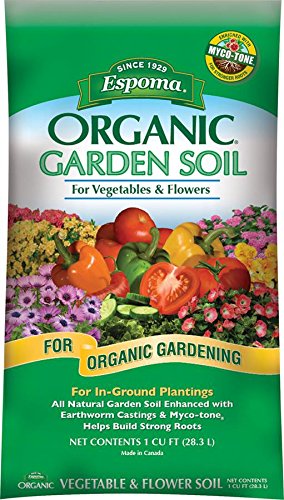
If your soil (Buy Online) has high levels of clay or tends to collect puddles of water, then you can add some compost, along with a generous amount of sand, in order to improve drainage. Doing this will prevent your onions from rotting in the soil.
Your soil pH should be between 5.6 and 6.5. If the planting area needs to be fertilized, add a fertilizer with a high phosphorus content, as this will promote root growth instead of leafy top growth.
Onion Plant Spacing
Once your soil is ready, you can start planting the onion sets. The onion sets should be planted 0.5 inches (1.25 cm) deep with a spacing between plants of 6 inches (15.24 cm).
Once your onions are planted, you can lightly water the area daily for about a week. When the onion plants emerge from the soil, they will need about 1 inch (2.54 cm) of water per week. Weeds can sap moisture from the soil and overcrowd the young plants early in the growing season, so make sure to carefully pull any weeds from the planting area.
Mulching Onions
Onion plants have very shallow root systems, so disturb the soil as little as possible when weeding. Once the plants are 2 to 4 inches (5 to 10 cm), add a layer of mulch, as this will suppress weed growth and limit the amount of soil moisture lost through evaporation.
Onion Care & Harvest
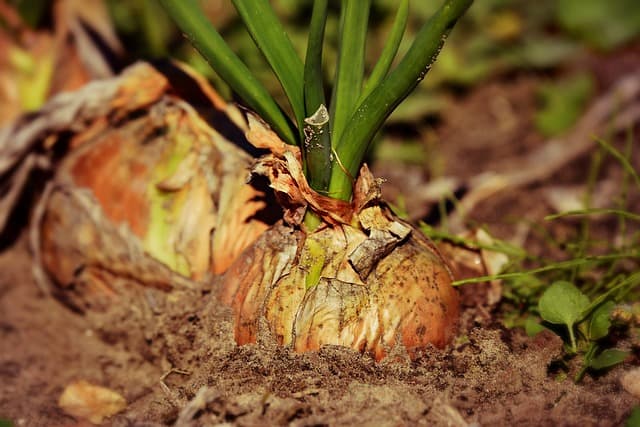
Onion Pests and Diseases
Onions are a relatively easy crop to grow but a few pest and disease problems can occur. Make sure the onion plants are kept well hydrated, and if any signs of wilting are visible, then water them immediately.
Onion Root Maggot
If watering the plant does not rectify a wilting problem, the plant may be infested with onion root maggots. If this is the case, immediately remove the plant from the garden and dispose of it, in order to protect any other plants from the infestation.
Onion Aphid Control
Onions are also susceptible to aphids and black onion thrips. Aphids tend to only be a problem when the weather is cool, and you can remove them by hand or spray the plant with a little soapy water.
Onion Thrips Control
Black onion thrips are a little harder to find, as they prefer to hide in the leaf nodes of the plant, so closer inspection might be necessary to see if they are present.
When are Onions Ready for Harvest?
Onions are ready to harvest in multiple stages of development. If you prefer to use onions like scallions you can harvest them after 2 weeks while they are still immature. Picking young onions will not get you much of a yield, so it’s best to wait until they are mature.
When are Onions Ready to Pull?
For mature onions, the best indication that they are ready is when the stems and tops of the plant begin to turn yellow and flop over. Once the onions are pulled from the garden, brush the dirt off and let them sit in the sun to dry.
Storing Onions for Winter
If you want to store onions over the winter, hang them in a room with good air circulation for three weeks to dry, as onions will keep for months if dried this way. Fresh onions will keep in the refrigerator for 1 to 2 weeks, or you can freeze them for later use.


